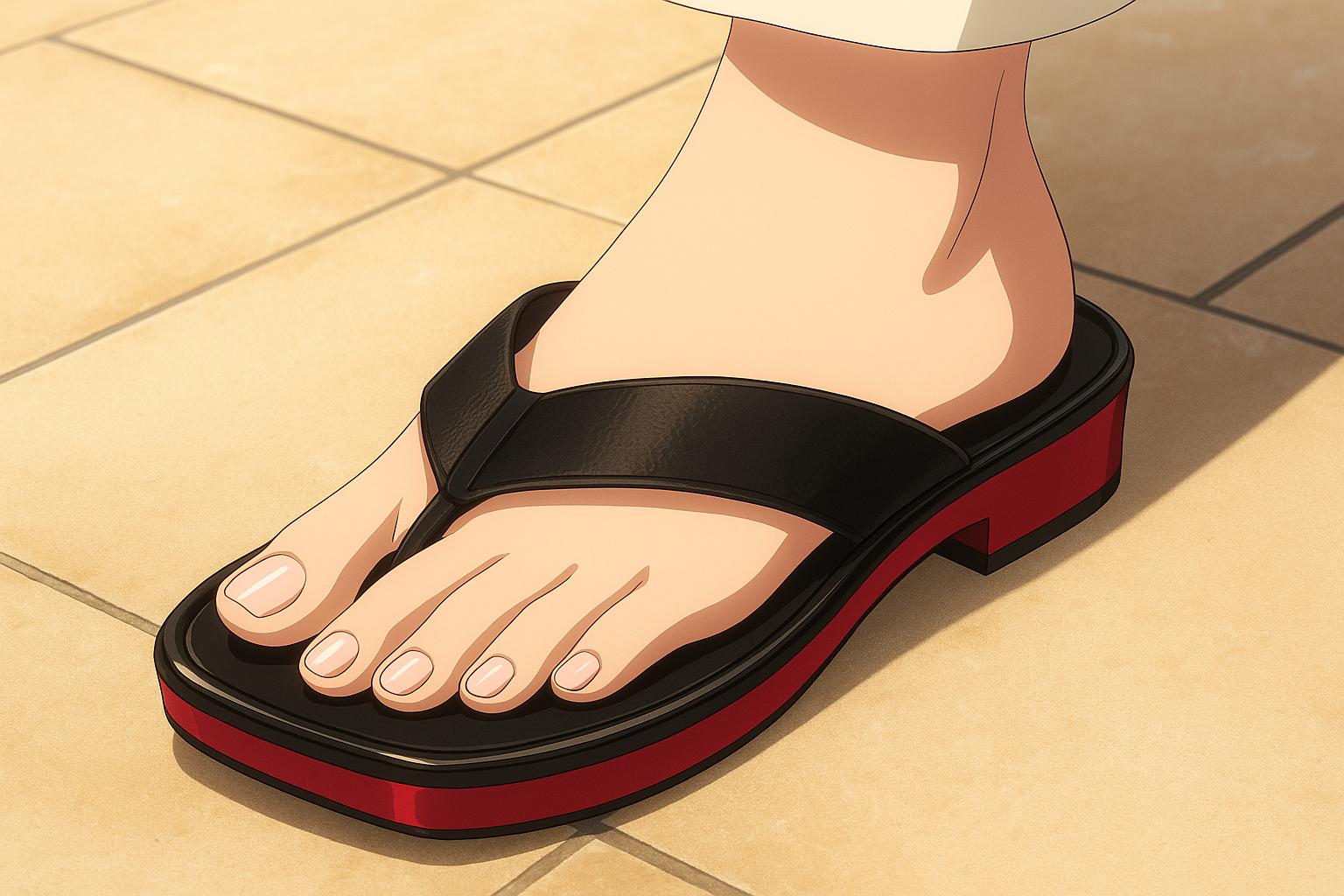Flip-flops, once relegated to the status of communal shower footwear and post-pedicure slip-ons, are experiencing a remarkable renaissance, moving into the realm of high fashion. No longer merely associated with practicality, these summer staples have been embraced by both luxury designers and everyday consumers alike. Libby Jane Page, executive director of Vogue Shopping, encapsulates this shift, noting their “endless appeal,” a sentiment echoed across the fashion landscape.
The catalyst for this revival can be traced to a pair of £670 flip-flops introduced by The Row, the luxury brand founded by the Olsen twins. This pair, distinguished by its sophisticated black fabric thong and striking red rubber sole, sparked both outrage and intrigue. Despite the astronomical price tag, they sold out quickly, igniting a waiting list and signifying a burgeoning appetite for high-end flip-flops. The trend is only further reinforced by their presence on elite runways, including jelly varieties showcased by Chloé and smart leather iterations from Ferragamo as well as a rubberized platform style from Coperni.
On the high street, the impact has been undeniable. Retailers are reporting a surge in demand, with searches for flip-flops soaring by 44% at John Lewis. Bestsellers include a £14.40 model from Ipanema, featuring a stylish tortoiseshell thong, and a £9.95 rubber pair from Muji is touted as a budget-friendly alternative to more expensive lines. The democratization of luxury has rendered flip-flops stylishly versatile, showcasing how the right design can elevate even the most casual footwear.
The flip-flop's resurgence is also reminiscent of the rise of other “ugly” footwear such as Birkenstocks and Crocs, which have shed their previous derogatory associations. Now, the flip-flop embodies a state of relaxed chicness that appeals to consumers eager to showcase individuality. Fashion writer Liana Satenstein remarks on this trend towards toe exposure, asserting that we are indeed in a “phalangeal era.” The exposure of feet through flip-flops reflects a broader societal shift towards embracing all forms of beauty and expression.
Yet, as flip-flops ascend the fashion hierarchy, it is crucial to consider their practicality. Helen Branthwaite, the chief clinical adviser for the Royal College of Podiatry, warns that while flip-flops can be a trendy choice, they may not be suitable for everyone. They primarily benefit those with strong feet; excess wear may lead to injuries or complications, particularly when transitioning back to more structured footwear come autumn. Branthwaite advises variation in shoe choices to maintain foot health.
Beyond their historical roots, with origin stories tracing back to ancient Egyptian models, the flip-flop’s evolution in the 1960s marked its integration into Western fashion, spurred by advances in rubber production. Today, their duality as both a fashion statement and summer staple is unparalleled. The trend can also be linked to stylist Allison Bornstein’s so-called “wrong shoe theory,” which embraces unexpected styles in fashion pairings, allowing for a more relaxed yet polished appearance when styled with tailored trousers or even formal gowns.
As summer approaches, the flip-flop offers a blend of comfort, style, and individuality. Whether adorned with embellishments or worn as minimalist designs, this once-maligned shoe has definitively stepped off the sidelines and into the spotlight. With both the fashion-forward and the casual consumer eager to adopt them, the humble flip-flop may yet redefine summer footwear in a way that is both accessible and visually impactful.
Reference Map:
- Paragraph 1 – [1], [2]
- Paragraph 2 – [1], [4]
- Paragraph 3 – [1], [3]
- Paragraph 4 – [1], [5]
- Paragraph 5 – [1], [6]
- Paragraph 6 – [7]
- Paragraph 7 – [1]
Source: Noah Wire Services
